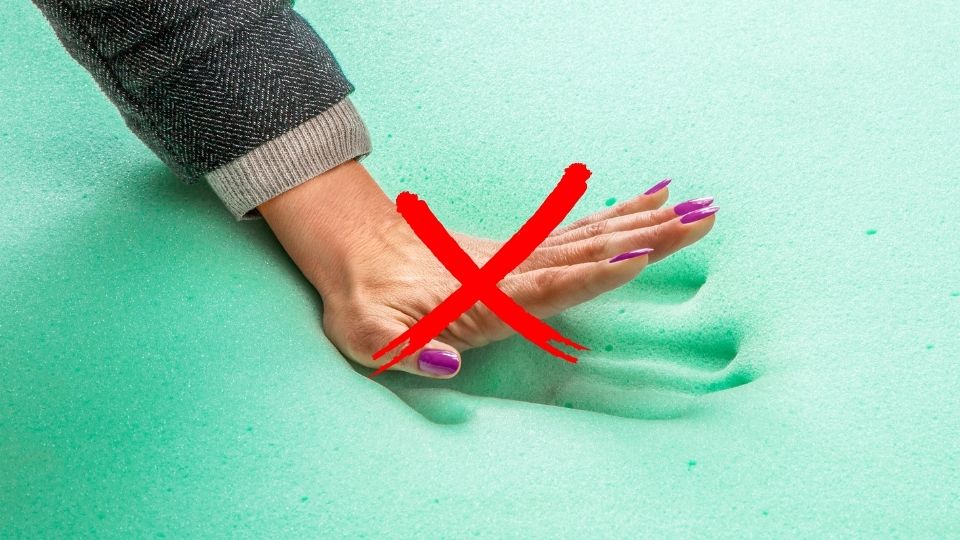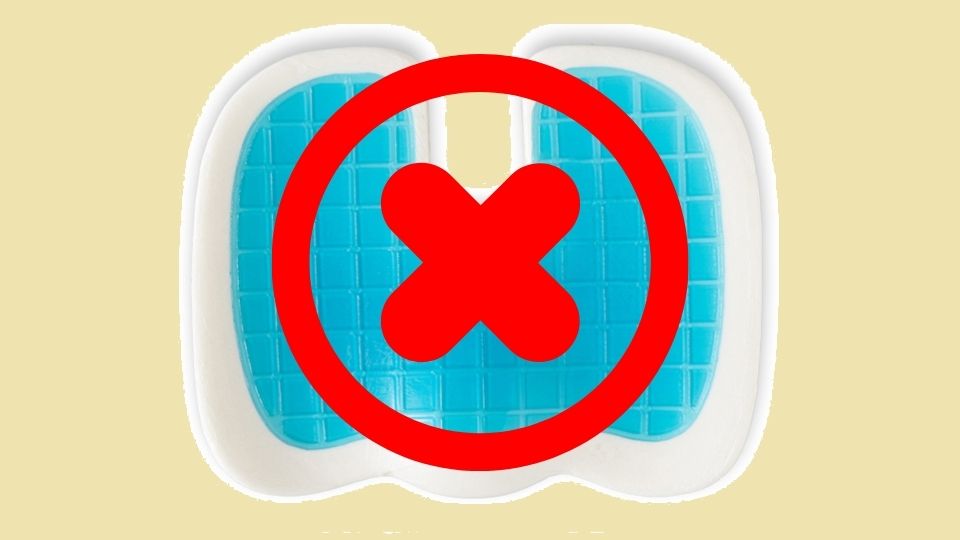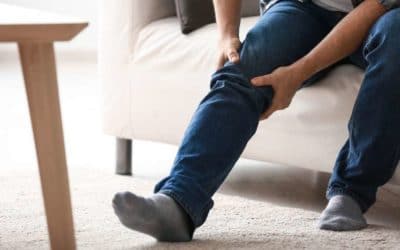Chiropractor Explains How to Avoid Uncomfortable Car Seats
It is almost a daily occurrence for me to be asked how to make a car seat more comfortable for my patients. I offer the following advice to my patients to make them more comfortable while driving and to keep their symptoms from exacerbating.
As a general rule, to make your car seat comfortable, sit straight with your shoulders against the seat back. You should press your feet all the way into both the clutch and brake pedals. You need this to position yourself well for driving.
All Day Comfort & Support
Despite the fact that a large amount of information on the internet is reliable, it does not cover all the essentials. Having spent thirty years designing solutions that make people more comfortable while driving, I want to share my knowledge of how you can increase your comfort and reduce any pain.
You cannot enjoy a peaceful drive if you are uncomfortable in your seat. When it comes to car seats, alignment is the most common cause of problems. You should begin by making a few alterations based on your physical characteristics.
9 Tips for a More Comfortable Car Seat:
Set the Height of Your Car Seat
Most drivers know how to drive but might not know that adjusting their seats can make a big difference for their backs and comfort! You should be able to see what’s ahead without having to strain yourself or hunch down to keep your eyes open. Despite the maximum height settings, it is still possible that your head might be too far away from the windshield; if this happens often enough, you can use a cushion or wedges (if space permits).
While adjusting the seat’s height, you should place your knees just above your hips. It’s bad for leg circulation if the back of your knees touches the seat bottom. Your knees should be two fingers away from the seat.
Black Friday: 35% Off Today
Typical Delivery 1-3 Days
Set The Back Of Your Car Seat
It is imperative that you adjust your posture as well, as posture is the basis of all back problems. The seats are typically reclined prior to driving, and many people are unaware of the consequences of long-term driving.
To make the seat supportive of your back, place your shoulders directly above your hips and seat so that your body is centered. Make sure that the seatback is adjusted to your posture. It is important to slide your buttocks back as far as possible against the seat back and in the center.
Set The Tilt
The seat tilt is a crucial but often overlooked aspect of driving. It should be tilted slightly greater than a right angle to provide optimum support for your back and legs. To do so, make sure that you are not sitting straight up in front or leaning too far forward as this will cause discomfort and injuries like cramping knees due to being crushed against the dashboard.
Set Your Headrest
You should adjust the distance from and the height of your seat in order to ensure your head remains safe when driving. Most of the body of the driver should be in contact with the vehicle at all times so that they are fully protected in case of an accident. It is important to adjust the height of the headrest so it is positioned at ear-level behind the driver’s head.
Ample Legroom
Your legs should not be scrunched up, your seat should support your thigh fully. Leave enough legroom to manage the pedals and do not sit too far back that you’d have to reach for them but also don’t push yourself so close against the wheel that it restricts movement of your knees which need a slight bend in order to move freely. Once this is done, let go of all tension from head to toe by stretching out those muscles as well before getting on with driving!
Legs that are squished up or locked tightly can result in reduced circulation, which affects your concentration and attention when driving. In addition, this also leads to serious health issues such as deep vein thrombosis.
The heels of the feet should be on the floor, and the balls of the feet should rest on the pedals. With the right foot, you should be able to quickly switch between accelerating and braking.
All Day Comfort & Support
Seat Belt Cover
Anyone who has ever been in a car accident will tell you that seatbelts are essential for safety. But what many people don’t realize is that seatbelts can also be quite uncomfortable, digging into your shoulder or causing the fabric to rub against your neck. Seat belt covers can help to make your seatbelt more comfortable by cushioning the strap and distributing the pressure more evenly.
Set the Steering Wheel
The steering wheel is a part of the car you should be able to adjust. It will make it easier for your body and hands in case they get tired from driving, but also because it helps with general comfort. This can be done by turning on buttons or levers inside the car – no need to reach out! Sit comfortably while adjusting so that when you stretch your arms around the wheel, most likely one hand would rest at 9 o’clock position and another arm’s hand rests at 3:00 as these are more comfortable positions for our wrists (fingers wrapped). If this doesn’t work then try moving up slightly in height.
Lumbar support
Lumbar support is another option provided by most cars to increase the comfort of the drivers. It should be positioned so that it rests on your lower back or at your beltline and inflated until comfortably fills in any space between you and the seat. If lumbar support isn’t offered, then roll a towel for extra cushioning.
Black Friday: 35% Off Today
Typical Delivery 1-3 Days
Car Seat Cushion
A wedge cushion for your car can improve comfort while sitting. The front edge of the seat can be positioned just below the front of the seat and angled inward at about 45 degrees. This can help to alleviate pressure on the muscles and improve posture.
Natural Latex Foam Seat Wedge Cushions (5/5) ★★★★★
If you want to improve your posture and relieve pain while sitting, you should consider a natural latex chair. As the heavier parts of your body sink into the latex, and the lighter parts remain free, your lower body will be naturally aligned. In addition, it will improve blood circulation so your spine can align effectively, alleviating pressure points!
A variety of natural latex benefits include being customizable in a variety of ways, being versatile in the sense that you can use them with or without armrests depending on your needs; and being eco-friendly/non-toxic since they contain no harsh chemicals or agents.
Memory Foam Seat Wedge Cushions (2/5) ☆☆☆★★
There are situations in which memory foam is a good option, but not all of them. The response of memory foam cushions to pressure is different from other cushioning materials, which may make them less comfortable when you sit up straight or your body is not molded as much around it.
For people with limited mobility, a responsive seat wedge will allow them to sit in both upright and seated positions more easily. Because memory foam is almost unresponsive, this type of cushion is not ideal for posture correction or lower back pain. Memory foams have a tendency to retain heat more readily during hotter seasons, which translates into a warmer feeling even when cooled down with air conditioning. Memory foam also contains harsh chemicals and fire retardants because it is a petrochemical.
Gel/Memory Foam Seat Cushion Combinations (1/5) ☆☆☆☆★
A memory foam seat cushion with a gel-infused top. It conforms to the contours of your body, provides support for your back, and provides cooling properties that these pillows don’t appear to possess. According to our research, our customers did not feel that the pads provided adequate cooling or comfort.
Gel Honeycomb Seat Wedge Cushions (3/5) ☆☆★★★
Silicone-based honeycomb structure foams are used in these cushions. There are many advantages to using these types of cushions since they allow air to flow freely and you won’t sweat as much as you might otherwise. Although silicone is renowned for its durability, it did not rank well for comfort, support, or satisfaction for this type of cushion due to its tendency to bottom out easily, which made the product uncomfortable for the users.
Do Seat Wedge Cushions Make Cars Seats More Comfortable?
Seat cushions come in a lot of shapes and sizes, but the ones that are best for your back will have specific features. During sitting, they ought to cushion you in the right places so pressure points don’t hurt your bony prominences! The best type of foam to look for is one made from natural latex (as it won’t compress easily when used).
A seat wedge pillow should also be made of multi-density foams in order to provide support while distributing pressure. If you want your back to feel amazing, you need a firm foundation, but a softer top layer.
Having a seat wedge cushion that conforms to the shape of your body is very comfortable. Ideally, the hips and knees should slope downward so that the trunk-to-thigh proportion is increased and bony prominences are adequately supported.
Takeaway
The information in this blog post is a great starting point, but for the most useful guidance on ergonomic information visit our blog. Here you will find articles on how to make your car seat more comfortable and other tips that may help with symptoms related to driving or sitting at work. We cover all aspects of ergonomics so be sure to check back often for new posts!














